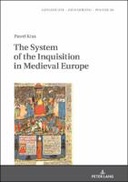Explore

The System of the Inquisition in Medieval Europe
Pawel Kras
2020
0 Ungluers have
Faved this Work
Login to Fave
This book reexamines the origins and growth of the medieval inquisition which provided a framework for the large-scale operations against religious dissidents. In the last quarter of the twelfth century, the papacy launched concerted efforts to hunt out heretics, mostly Cathars and Waldensians, and directed operations against them all across Latin Christendom. The bull of Pope Lucius III Ad abolendam of 1184 became a turning point in the formation of the inquisitorial system which made both the clergy and the laity responsible for suppressing any religious dissent. From a comparative perspective, the study analyzes political, social and religious developments which in the High Middle Ages gave birth to the mechanism of repression and religious violence supervised by the papacy and operated by bishops and, starting from the 1230s, papal inquisitors, extraordinary judges delegate staffed mostly by Dominican and Franciscan friars.
This book is included in DOAB.
Why read this book? Have your say.
You must be logged in to comment.
Rights Information
Are you the author or publisher of this work? If so, you can claim it as yours by registering as an Unglue.it rights holder.Downloads
This work has been downloaded 249 times via unglue.it ebook links.
- 249 - pdf (CC BY-NC-ND) at OAPEN Library.
Keywords
- Europe
- Heresy
- Heresy trials
- History
- Humanities
- Inquisition
- Inquisitorial registers
- KRAS
- medieval
- Medieval Christendom
- religious violence
- System
- thema EDItEUR::N History and Archaeology::NH History
Links
DOI: 10.3726/b17382Editions

